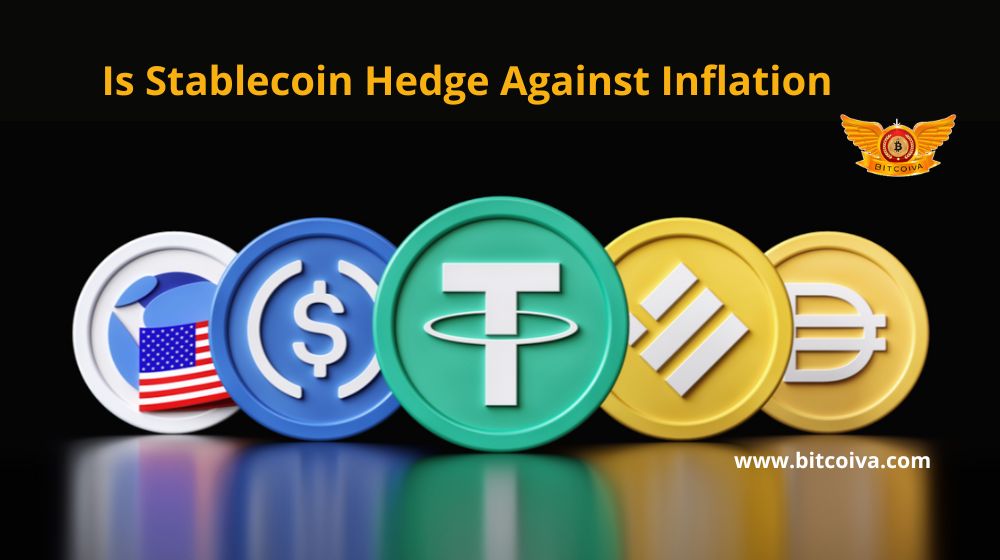Global financial markets have once again been shaken by geopolitical tensions and the ensuing supply chain pressures, just as the world economy was beginning to fully recover from the COVID-19 pandemic’s catastrophic consequences. Also Investing in Cryptocurrency India has become a question mark again
Additionally, inflation has reared its ugly head once more, causing central banks in significant economies to hike interest rates in an effort to rein in the skyrocketing costs of necessities like food and fuel.
Developed nations like the United States and the United Kingdom continue to report inflation at multi-year highs despite these initiatives, placing additional strain on household savings and depressing consumer spending.
In addition to raising the risk of an impending recession, these inflationary forces reduce the value of fiat money in consumers’ hands and emphasize the need for financial instruments or assets that can serve as a hedge against inflation.
Current Inflation’s Effects on the World Economy
Inflation has a negative influence on genuine returns produced by financial instruments in addition to having an adverse effect on the purchasing power of a nation’s fiat currency, particularly if the inflation rate is higher than the rate of return on investment.
Consider the S&P 500 index, which represents the top 500 publicly traded American corporations and serves as the industry standard for the nation’s stock markets.
The performance of this index, which has produced an average annualized return of 11.82% since its inception in 1928, may appear pretty impressive at first.
The profits from investments placed in mutual funds that resemble this index would, however, be considerably lower given that the Consumer Price Index (CPI) will reach a 40-year high of 9.1% in June 2022.
In actuality, the index has historically delivered an annual average return that has been adjusted for inflation of just 8.5%, and this is even though the average CPI has typically been substantially lower than the statistics that are currently being reported.
The US dollar has also increased dramatically against a basket of fiat currencies, such as the euro, the British pound, and the Japanese yen, after the Federal Open Market Committee (FOMC) decided to raise the US Federal Reserve’s interest rate to a four-year high of 2.25% in July 2022.
While this has assisted in lowering the price of commodities like crude oil, it has a detrimental effect on the value of investments made in these economies by US citizens and businesses in general.
The depreciation of these nations’ fiat currencies relative to the USD has only served to reduce returns on investments made in these markets for astute investors that allocate capital to emerging economies like Brazil, India, and China, among others.
What does Cryptocurrency Inflation Mean?
Top Cryptocurrency In India like Bitcoin (BTC) have produced outstanding profits for early-stage crypto investors in comparison to fiat currencies. While the USD index has increased by about 8% since August 2019, according to current pricing, BTC has returned almost 240%.
This is true even though BTC has corrected by almost 60% since its peak in November 2021, further demonstrating its potential for long-term wealth accumulation. One may even argue that Bitcoin can shield users from the harmful impacts of inflation.
Other well-known cryptos, of the top 10 cryptocurrency in india including Ether (ETH), BNB Coin (BNB), and Ripple (XRP), are showing a similar pattern, suggesting that they could be effective investments during times of high inflation and have the potential to produce retirement savings that outperform inflation.
It goes without saying that it is crucial to keep in mind that cryptocurrencies exhibit far more volatility when compared to fiat currencies and are viewed as assets rather than pure money. The limited token supply of cryptocurrencies like Bitcoin is another benefit.
The maximum supply of Bitcoin, determined by the original development team at 21 million BTC, means that it is not governed by the seemingly arbitrary printing of fiat money like the USD.
This suggests that the quantity of BTCs in circulation will never go over the predetermined limit, which bodes well for its potential long-term price rise. Even with no prescribed maximum supply limit for the Most Popular Cryptocurrency In India like ETH, the process of creating new tokens is based on code and computing labour done.
No entity can produce ETH tokens without first adding a new block to the Ethereum blockchain, and the block reward mechanism is based on a number of variables, including the difficulty of the calculations that miners must do.
It is clear that cryptocurrencies work in a much more open and democratic manner when compared to the arbitrary manner in which the U.S. Federal Reserve or any other Central bank in the world issues money.

Is Stablecoin Hedge Against Inflation
A rising number of crypto tokens are being introduced in the larger cryptocurrency market with the intention of providing a more advantageous substitute for fiat money.
These cryptocurrencies, referred to as stablecoins, are backed by conventional assets like the US dollar and gold, and their prices are maintained by holding reserves with a value equal to the quantity of tokens available.
All stablecoins attempt to give cryptocurrency investors a means of exchange that can be used to deal freely across international boundaries, even though some of them are also supported by algorithms or are tied to another cryptocurrency that is a part of the same blockchain protocol.
This is crucial for citizens of nations whose hyperinflation has made their fiat currencies a dangerous form of currency, such as Turkey, Argentina, Ethiopia, Zimbabwe, or Lebanon. Hyperinflation refers to a situation where there is a rapid and uncontrollable price increase of significant products and services in an economy. The term is typically used to describe a monthly inflation rate above 50%.
People in these nations could move to stablecoins like Tether (USDT), USD Coin (USDC), or Binance USD (BUSD) to preserve their capital from sharp wealth erosion as hyperinflation continues to devalue their national currencies.
They could use cryptocurrencies to protect their investments from inflation by holding them as stablecoins, and they could also profit from the appreciation of the underlying peg to make their savings even more valuable.
Hyperinflation has no impact on cryptocurrencies like stablecoins because this is inviolate even in a high inflation and interest rate regime. Therefore, cryptocurrency may also be the best investment for investors in countries with high inflation rates.
Is Investing in Cryptocurrencies During an Inflation Good Move
While some cryptocurrencies have failed miserably due to fraud, security issues, or a mix of the two, there are many others that have withstood the test of time and continue to draw throngs of investors.
Avalanche (AVAX) and Polygon (MATIC), among other cryptocurrencies, could provide a long-term hedge against inflation in addition to BTC and ETH. Investors might dedicate some funds to these cryptocurrencies in the hopes of making money over the long run, and they could use tools like staking pools to generate additional income from their investments.
According to historical data, it can also be a successful strategy to carefully check on Cryptocurrency Investment Platform In India that is now trading close to significant support levels and just keep them as an inflation hedge.
Stablecoins and other cryptocurrencies, on the other hand, can be stored in hardware or digital wallet just like fiat money is in a traditional bank, which can help investors preserve their investment from depreciating in a hyperinflationary situation.
In other words, stablecoins are more resistant to inflation than other currencies like the Turkish lira, particularly when they are tethered to the US dollar. Nevertheless, certain stablecoins have a reputation for trading below their peg, so investors would be wise to exercise caution when trading or investing in them.
Visit us on: www.bitcoiva.com

